Earlier this spring, in April, we attended the Going Native Garden Tour along the Peninsula, and after visiting some of the native Bay Area gardens on the tour, in the late afternoon, we met up with Town Mouse and Country Mouse, and Christine of Idora Design. Christine had brought a few seedlings of Eriogonum grande var. rubescens to share with us that she had started from seed, which are now blooming, and we’re so grateful she brought them. Thank you Christine!
Eriogonum grande var. rubescens, is also commonly known as Red or Rosy Buckwheat, or San Miguel Island Buckwheat. As its common name implies, it is natively found on San Miguel, as well as Santa Cruz Island, off the coast of California. It is listed by the California Native Plant Society as a rare California native plant species.
The genus name Eriogonum is derived from the Greek Erio, meaning “wool”, and gono meaning “knee”. This apparently refers to the woolly leaves and swollen nodes observed in most Eriogonum species.
Rosy Buckwheat can reach 2 feet in height, with a 3-4 foot spread. At the coast this plant requires full sun, but needs partial shade inland. Each plant produces a profusion of blooms between late June to October, and after its first season is reportedly very drought tolerant, requiring water only once or twice per month once established. Although this plant tolerates clay soils, over-watering in summer can shorten the life of this already short-lived plant. Eriogonum grande var. rubescens typically only survives 3-5 years. Although this is a short-lived species, once established, if the ground in the garden isn’t mulched too heavily, this species should self sow, and naturally replace itself.
We didn’t have any species of buckwheat growing natively on the property, and we’d never tried growing any here before Christine gifted us these plants. However, we were very interested to try them as the California buckwheats come into their own in late summer when the majority of our other native blooms are spent for the season. As we plan to add honeybees to the farm next spring, we’re becoming ever more aware of ensuring we have nectar sources for the bees available during the late summer season.
Despite our miserably cold, damp weather in recent weeks, this buckwheat couldn’t be more happy. There is little else blooming here at the moment. Just a few native Asters, along with the squash and rosemary blossoms in the vegetable garden. At the moment the buckwheats are just about the only other plants in bloom, for which the bees, and butterflies seem most grateful, especially this little Gray Hairstreak butterfly (Strymon melinus) that we haven’t noticed here before.
We’re now looking at seeding significant quantities of buckwheat, both this species, and a species native to this area, Eriogonum latifolium (Coast Buckwheat) around the periphery of our orchard and gardens in late fall when the rains return. As deer apparently relish California buckwheats, planting will be strictly within the confines of our deer fence though. Once the annual spring blooms are spent, reseeded, and cut down, the buckwheats should be well on their way toward blooming, providing our native pollinators, and our honeybees, with an extra food resource before the winter.
Apparently the honey produced from California buckwheats is an exceptionally rich, deep, golden color, that is both distinctively fragrant and flavorful. We’ll have to wait until we have our bees, and a lot more buckwheat blooming, to try buckwheat honey for ourselves though.
Various California buckwheats have been used by Native peoples for a variety of purposes, including a decoction of roots commonly used by the Costanoan Indians as a remedy for colds, and coughs.[1]
If you live in California and are interested in planting this species, Eriogonum grande var. rubescens can be sourced through numerous native plant nurseries, both as plants or seed, throughout California.
——————
[1] Daniel E. Moerman’s Native American Ethnobotanical Database

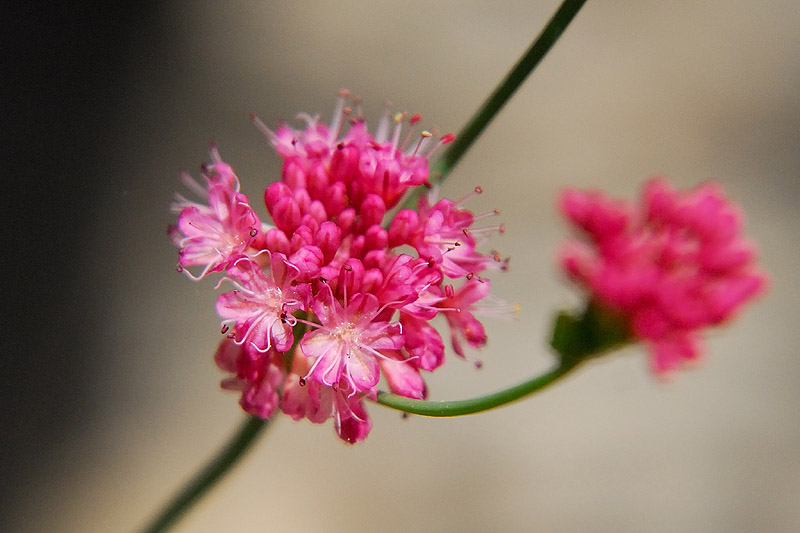

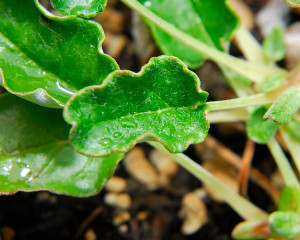
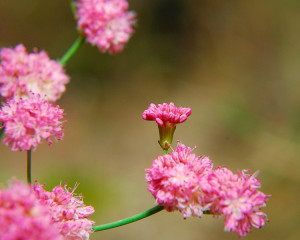
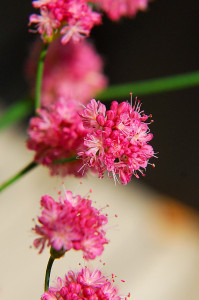

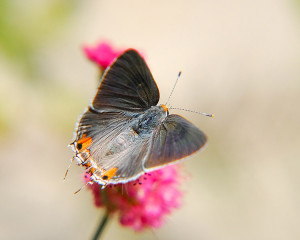
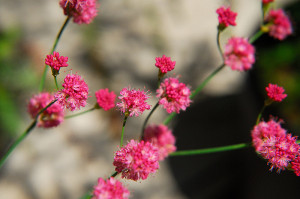







What a beautiful native flower! And the new butterfly visitor is icing on the cake! Lovely photos.
Now thats a little beauty and I could just imagine a few large drifts of those blooms at this time of year. But the deer seeing those behind the fence – would it encourage them to try and jump that fence of yours again since they relish those so much?
Oh Clare I can’t wait for you to get bees and those flowers would just be perfect for a special blend of honey – I would love a honey bee hive but our deeds ban them from our garden.
Our intent is to plant shrubs outside the deer fence that they find distasteful, like rosemary, as a diversion. Our last fence modifications have been holding well (knock on wood). Between the fence reinforcement, and selective planting, we’re hoping the deer don’t notice anything tasty in the gardens 😛
I’m so happy those seedlings worked out! I think one of mine survived as well. Yes, I agree, this plant is truly a butterfly magnet, and a sight for sore eyes in the dry summer months.
(I sure didn’t know where the name came from, well, now I do ;->)
Maybe your lovely buckwheat plants will send some seeds out to self-sow outside the deer fence and keep the deer satisfied. But, on second thought, I guess deer are more of a “give them an inch and they’ll take a yard” sort of species! -Jean
Bees! Oh boy … more stunning photos and adventures. Luv it, Clare 🙂
Oh, I just love this little pink Eriogonum. I do love the different species of Eriogonum and their tiny flowers 🙂
Nothing like passalong plants. Rosy Buckwheat is by far my favorite buckwheat. For what it’s worth, I’ve planted it in several heavily traffic’ed gardens without getting any deer damage, but of course that doesn’t mean they won’t get eaten in your area.
Here we assume all plants will be eaten until proven otherwise. We have a high deer population here, and almost anything that can’t get up and run away, is at risk! 😛
Fabulous looking plant, love that pink, wow, I would imagine it would be beautiful with a grey foliage at it’s base like Artemisia?
Don’t know this butterfly so did some research and was amazed to discover that it the most widespread hairstreak in North America, living in many different types of open habitat and has been recorded breeding on over 50 species of plants!
Now that is amazing….
Good sleuthing Ena. I found that too, so I wondered why I hadn’t noticed them before. We have a number of ‘little blue butterflies’ here, the problem is that sometimes it’s difficult getting close enough to figure out who’s who!
As for gray foliage, the other species of Eriogonum we’d like to plant is the coast buckwheat, Eriogonum latifolium. I picked up one plant from Annie’s Annuals last weekend, to see how it likes it here, and its leaves are silvery grey, and quite fuzzy compared to the San Miguel buckwheat. I think they’ll look fabulous together 🙂
I like that plant. I have never seen one in UK but am now going away with wider eyes to look it up!
Funny…. I just planted some of these. The garden was looking really sparse.
I’ll be curious to see how your bees like it Lisa 🙂
oh, my. From my coastal sage scrub preservation days, I have been in love with Eriogonum. A PINK Eriogonum I’ve never seen (at least not seen and known it) and the ONLY Channel Island I’ve ever been to (for all of 45 crazy minutes, practically RUNNING down a trail to the beach) was San Miguel. Magical land of coastal sage scrub tweaked by Dr. Seuss. SO AMAZING. I want that plant for my birthday. =) Thanks for the lovely photos!
That buckwheat looks nothing at all like the white flowered kind I’ve grown for cover crops. The bees and pollinators around here positively loved that!
Interesting you are going to add bees to your mix. I had a hive many years ago and it was a fascinating hobby. I’m still considering them for us.
Nice shots of the Hairstreak butterfly!
Bees for us seem like the logical next step, and are primarily out of the desire to increase available pollinators on the farm, not really for honey, although that will occasionally be a bonus. We currently have Mason Bees, which help with early fruit tree pollination, but they’re done for the season by early June. The summer blooming plants could benefit from some extra visitors to their blossoms too.
I think the buckwheat grown as a cover crop is a different genus, Fagopyrum, not Eriogonum? That’s always the problem with common names, they create so much confusion! 😛
I assumed Buckwheat was just another grain crop but these exquisite flowers tell a different story. The Hairstreak took my breath away.
Laura x
p.s. Clare, how are you going to find the time for bees as well as everything else at CV? Are your days longer there?!
Haha…no, our days are the same length, although if I could make them longer I would! We’re considering a bee hive type (Top Bar hive) that requires less invasive manipulation (aka TIME) than the standard Langstroth hive here. We’ll see how it all plays out, we still have lots of bee homework to do!
Pink! Fabulous. Personally, I am a creamy-white enthusiast. But clients often ask for a specific palette and pink is ever-popular.
Most people wouldn’t associate the pinks with the California Native plant color range, but it is well-represented in our region.
Thanks for the lovely photos.
Thank you for this informative article. It may be just the cover remedy for the downslope of a hillside on my daughter’s property near Santa Cruz. Does it tend to deep roots?
I think most native California buckwheats have modestly deep root systems once they’re established. I did read that Eriogonum fasciculatum has the deepest roots, but some consider it to be a bit thuggish near the coast. A borderline invasive native of sorts.
Another choice might be Phacelia californica. It’s noted for being good for erosion control on slopes. Pretty too, the bees love it!
Weirdly, the bees don’t forage in my yard. They fly up and out and eat who-knows-where.
The Rosy Buckwheat is beautiful! I’m from CA but I don’t think I have seen that in our local nursery. Bees come around like crazy near my veggies, scares me sometimes. By the way my husband built a deerfence that’s only about 5′ tall. We have deers (between 3-6) that come by almost everyday since I live in the mountains but they haven’t touched my little garden. I planted some Sage and Mint and they don’t like it!
Thanks for stopping by Pricilla. You’re lucky the deer have left your garden alone. They were jumping our 7′ fence, and my mint, both the spearmint, and chocolate mint, were both pruned almost to the ground! The only three plants they consistently ignore here are rhododendrons, rosemary, and sword ferns. We also have a lot more deer here, especially since spring with all the new babies! 😛
WOW!!! Those flowers are really beautiful!! I wish they grew on the East coast!